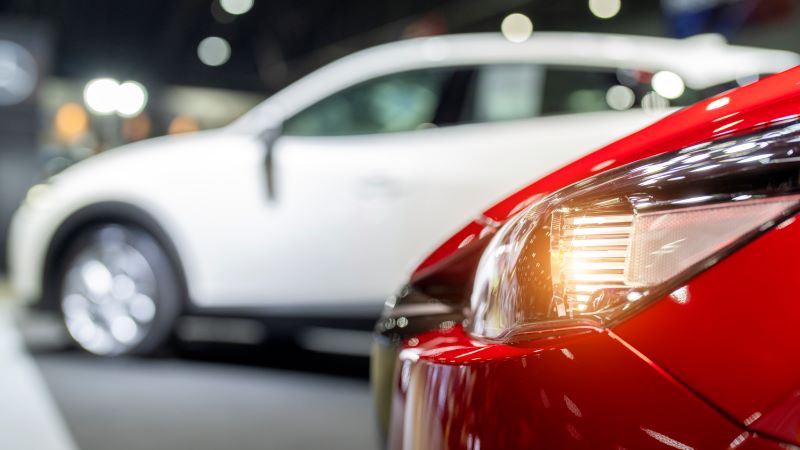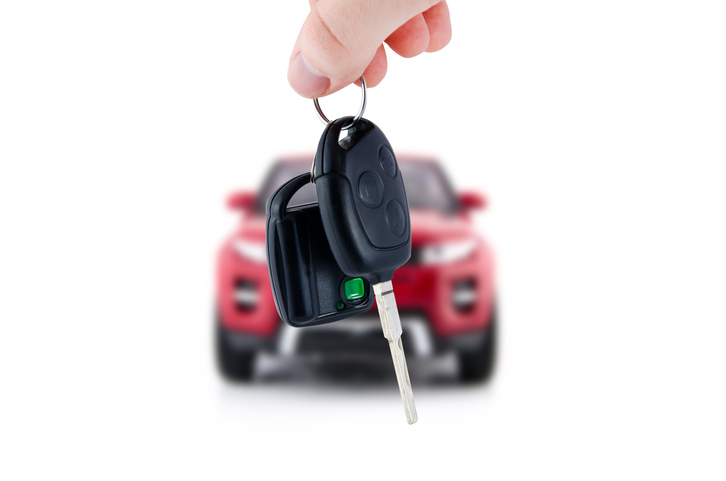As we hit the open road into 2026, new vehicles are more equipped for safety, comfort and ease of driving than ever before. Electric cars (EVs) and hybrids are becoming more popular and accessible, and you may be able to save money by snatching up one that’s a used late-model.
Many 2026 autos come with advanced artificial intelligence functions to automatically adjust your speed to adapt to traffic and even take over the wheel while you enjoy the scenery. Car, truck and SUV manufacturers have also beefed up driver assistance systems for a safer drive.
If you’re in the market for new wheels in 2026, you’ll find no shortage of features designed for a comfortable, safe ride. Before you shop for a new car, it helps to learn what’s trending in the automotive market.
Here are six 2026 car trends shaping the auto industry. Keep reading for details about what each trend offers and how it can improve your driving experience.
1. Longer-Range Electric Vehicles
You’ll find a broad selection of 2026 EVs that can drive upwards of 300 miles on a single charge. The 2026 Lucid Air luxury sedan can drive up to a whopping 420 to 512 miles on one charge, depending on the model and horsepower. Other long-range EVs include:
- Audi A6 Sportback e-tron, an electric sedan: up to 392 miles
- Chevrolet Silverado truck: up to 478 miles
- BMW iX3: up to 400 miles
- Hyundai IONIQ 9 SUV: up to 335 miles
- Toyota bZ SUV: up to 314 miles
- The Kia EV9 SUV: up to 305 miles
- Nissan Leaf crossover vehicle: up to 303 miles

2. A Wave of Used EVs and Hybrids
The number of EVs hitting the used car market is projected to spike in 2026, according to the 2024 J.D. Power E-Vision Intelligence Report. The used EV influx will arrive as U.S. consumers return approximately 250,000 EVs that come off lease in 2026.
With the large number of terminated leases, you may be able to score a used EV at a bargain price. For example, in 2025, a used Nissan Leaf trade-in value was around 43% less than its 2022 MSRP, according to consumer auto resource Edmunds. The 2022 Hyundai IONIQ 5 had a trade-in value of $22,205—just 44% of the original price.
Late-model used EVs are less likely than gas-powered vehicles to need repairs, because EVs don’t have as many moving parts as traditional cars. Even so, Edmunds recommends purchasing a certified pre-owned electric vehicle with an extended warranty for added peace of mind.
If you’re ready to go the distance in your used EV, just remember that older models won’t likely have the long ranges boasted by 2026 EVs.
3. More Advanced Driver Assistance Systems
Advanced driver assistance systems (ADAS) are a standard feature of many new cars in 2026. ADAS automate certain driving tasks to help increase driver awareness. These technologies make driving safer by reducing distractions that could take your eyes off the road.
If you’re driving a late-model car, it likely already has ADAS features such as collision avoidance alerts, the ability to take control of the car to avoid crashing, emergency braking or lane departure alerts. Now 2026 models have additional ADAS features, including:
- Connected vehicle technology: “V2X” is an umbrella term for vehicle-to-vehicle (V2V) and vehicle-to-infrastructure (V2I). technologies. This technology allows your and other vehicles equipped with V2V or V2I safety systems to communicate via a wireless network. With V2V, your vehicle sends information to other cars. For example, if a car far ahead of you with V2V brakes while you’re in a long line of vehicles, that information transmits to other cars with V2Vto help prevent a collision. Another V2V feature assists at intersections and warns of crash dangers when turning left. With V2I, urban and highway systems can communicate a vehicle edging out of a lane or impending stoplight changes.
- Front-crash prevention: This ADAS technology uses cameras, sensors, radar, and light-detection and ranging (lidar) to help stop rear-end collisions due to being too close. The system may also ready the brakes for maximum effect.
- Automatic rear braking: These ADAS systems warn you and apply the brake while backing up if you’re about to scrape against a metal pole or another object. Some vehicles also have an alert and automatic braking for approaching cross traffic behind your vehicle.
- Adaptive cruise control: This ADAS feature changes your car speed based on the cars in front of and around you to adapt to changing traffic conditions.
- Traffic signal recognition: A car-mounted camera detects and recognizes traffic signals and signs, including signs for construction ahead, so you can process the information quickly and adapt your speed accordingly.
- Steering assistance: Some ADAS technologies include a feature that steers your car back into the lane when you veer outside the lines.
- Conversational voice-activated AI: This isn’t a common feature yet, but certain Volkswagen models come with subscription-based Premium Speech. This AI voice-activated technology allows more natural, conversational requests. For example, instead of asking the AI assistant to set the temperature, you can just say, “I’m cold,” and the system kicks on the heat. Say “I’m hungry” and the AI tech suggests nearby restaurants. Conversational AI also suggests destination sightseeing options and creates entertaining stories to listen to while driving. You can check out a video demonstration of Volkswagen’s voice-activated AI to see this technology in action.

4. On-Demand Car Subscriptions
You may already subscribe to a satellite radio service or other subscription-based apps that came with your car. But subscribing to the vehicle itself is a growing trend, according to IMARC Group, a market assessment and global consulting firm. With a car subscription, you can cruise around in a new car without the hassle and expense of car ownership or a lease.
With a car subscription, you make one monthly payment that includes expenses such as insurance, maintenance and emergency road assistance. The monthly subscription price is typically higher than what you’d pay to lease a car, but the flexibility can’t be beat.
Car subscriptions can be long-term or as short as one month. The subscription lets you switch vehicles if you need a different type of car for a road trip or a larger vehicle to accommodate more passengers. You can even switch to a different vehicle just because you want to change things up.
5. More Autonomous Cars for Hands-Free Driving on the Road
Driverless cars aren’t commonplace on streets yet. But you can still enjoy autonomous driving features in some 2026 models that allow hands-free driving on compatible roads and highways. This technology uses real-time positioning cameras and sensors, GPS and lidar map data to allow hands-free driving. Depending on the model, autonomous driving features can steer, change lanes, brake and accelerate under the driver’s supervision.
2026 models that offer autonomous driving features include the Ford F-150 and Mustang Mach-E SUV, Buick Enclave, Lincoln Navigator and Aviator and Chevy Tahoe.

6. Advanced Connectivity
Today’s cars employ internet connectivity to connect with your other devices. Internet connectivity allows vehicles to download updates and new features and stream audio or music on the car’s infotainment center.
Internet connectivity also allows smart cars to send and receive data, communicating with various components of the vehicle to monitor and alert the driver on factors like tire pressure, engine function and real-time traffic conditions. This connectivity also enables V2V alerts during dangerous situations like sudden braking ahead or intersections that aren’t safe to enter due to an oncoming vehicle.
Shopping for Your New Ride
Now that you’ve learned more about what 2026 vehicles have to offer, you can shop for a new car with an eye toward the features that keep you safe, connected and at ease when you’re behind the wheel.






